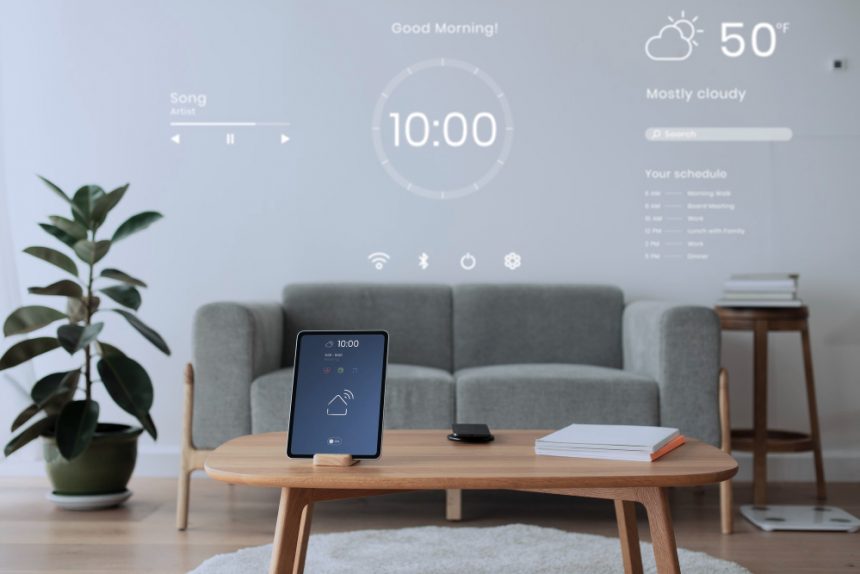The Evolution of Smart Home Technology: From Early Convenience Gadgets to Truly Integrated Living Ecosystems
Not long ago, the term smart home often meant a single quirky gadget perched on a counter—maybe a voice-controlled speaker or a Wi-Fi–connected light bulb that could turn blue with the right command. These were fun novelties, but they rarely made everyday life meaningfully easier. Early adopters frequently faced clunky setup processes, incompatible systems, and the paradox of “smart” devices that added more complexity than they removed.
Fast forward to today, and the picture has changed considerably. Smart home technology is no longer about isolated products that impress visitors during a quick demo. The most promising innovations are now moving toward creating truly integrated living ecosystems. Instead of demanding constant attention and manual handling, these systems anticipate needs, handle repetitive tasks in the background, and cultivate environments that adapt intelligently to the people within them.
For modern households juggling hectic schedules, the appeal is no longer just novelty—it’s genuine lifestyle transformation. A well-designed smart home reduces stress by automating mundane routines, saves time by streamlining household chores, strengthens security without feeling invasive, and delivers a sense of seamless harmony between the digital and physical layers of home life. The best of today’s solutions understand that people don’t actually want “more tech”—they want less friction. They want the comfort, control, and efficiency that come when technology works invisibly and reliably, not when it requires constant fiddling.
When done right, this evolution means homeowners don’t come home to a wall of blinking apps and confusing dashboards—they come home to a space that already feels in tune with them, quietly working to support their needs rather than demanding their attention.
Beyond the Buzzwords: Identifying Which Smart Home Solutions Actually Deliver Tangible Value
With so many products marketed as “smart,” it can be difficult to discern which ones genuinely improve daily living and which ones are simply wrapped in unnecessary hype. To cut through the noise, it helps to focus on four fundamental areas where smart home technology has proven its worth: streamlining routines, enhancing safety, improving energy management, and delivering intuitive, privacy-conscious interactions.
1. Streamlining Repetitive Routines
Some of the most valuable smart technologies are those that quietly eliminate small but constant tasks. Think of thermostats that learn your ideal temperature preferences and adjust without prompting, lights that turn on gradually in the morning to mimic sunrise and support natural waking, or robot vacuum systems that can handle cleaning schedules in the background.
What makes these devices transformative is not the “wow factor” of controlling them remotely, but their ability to handle the mundane consistently so that households can reclaim mental space and time. Instead of adding one more thing to manage, they subtract sources of friction from daily life.
2. Enhancing Safety Without Becoming Intrusive
Home security has been a major driver of smart technology adoption, but the true game-changer is the way modern systems now integrate proactive awareness without overwhelming homeowners. Cameras, smart locks, and connected sensors increasingly offer AI-driven features—such as distinguishing between a delivery person and a potential intruder—reducing false alerts while providing genuine peace of mind.
Importantly, the most effective security setups aren’t those that bombard you with every tiny notification; they are those that intelligently filter noise and provide useful, actionable information. Privacy also plays a central role: the best solutions ensure that your household’s security does not come at the expense of feeling constantly surveilled.
3. Perfecting Energy Management for a Lower Carbon Footprint
Sustainability and savings often go hand in hand, and smart homes are becoming powerful allies in reducing both carbon impact and utility bills. Smart thermostats and energy monitors now integrate with renewable energy sources and adapt to dynamic pricing, helping households shift consumption to times when power is cheaper and greener.
Lighting systems that automatically dim when natural light is plentiful, appliances that run during off-peak hours, and water management tools that alert users to leaks or excess usage all contribute to a more efficient home. Unlike flashy gadgets that gather dust, these technologies provide measurable value, both financially and environmentally.
4. Providing Intuitive, Privacy-Respecting Interactions
One of the central criticisms of early smart devices was the feeling of being trapped in a maze of apps—each device demanding its own interface, updates, and cloud account. Today’s best solutions recognize that the ultimate goal is seamlessness. Whether through unified voice assistants, interoperable standards like Matter, or predictive automations, the systems bringing real value are those that respect natural rhythms and integrate smoothly into existing habits, rather than forcing users to adapt to them.
Equally important is an increased emphasis on privacy. Many homeowners now rightly ask: Does this device need to send my data to the cloud? Forward-looking technologies are shifting toward local processing, minimal data requirements, and transparent privacy practices, allowing families to enjoy the benefits of convenience without feeling like they’ve compromised personal security.
Choosing Quality Over Quantity
The smart home space has matured beyond the phase of buying every new “connected” gadget that hits the market. Shiny features and smartphone gimmicks may dazzle at first glance, but they quickly become burdens if they clutter your digital ecosystem with constant updates, fragmented controls, or hidden frustrations.
Truly valuable smart home investments are those that:
- Integrate naturally into existing routines instead of imposing new ones.
- Solve real problems rather than creating minor conveniences with big trade-offs.
- Respect privacy and transparency, giving users peace of mind.
- Work reliably in the background, requiring little ongoing management.
When homeowners prioritize solutions that meet these criteria, the smart home finally begins to live up to its promise—not as a showcase of technology for technology’s sake, but as a carefully tuned system that elevates daily life without noise or drama.
Conclusion: Harmony, Not Hype
At the end of the day, the smartest home is not the one with the most gadgets, the flashiest app, or the longest spec sheet. It’s the one that feels almost invisible—where comfort adjusts itself seamlessly, safety is assured without constant alerts, energy waste is trimmed quietly in the background, and the people inside can spend more time living rather than managing.
The smartest technologies are those that make life simpler, calmer, and more human. And when chosen with care, that’s exactly what today’s best smart home innovations are beginning to deliver.










